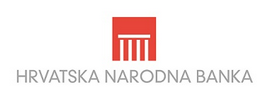Structure of Capital Flows and Exchange Rate: The Case of Croatia
| Publication | Working Papers |
|---|---|
| Issue | W - 052 |
| Author | Maja Bukovšak, Gorana Lukinić Čardić, Nina Ranilović |
| Date | July 2017 |
| JEL | F32, F41, C51, C32 |
| ISSN | 1334-0131 |
Keywords
capital inflows, kuna exchange rate, SVAR with block exogeneity
The paper analyses the impact of different types of capital flows to Croatia on the kuna exchange rate. SVAR models based on Cholesky decomposition with block exogeneity restrictions are estimated using different types of capital flows and the key finding is that the structure of capital flows matters for their impact on the exchange rate. On the one hand, debt capital inflows lead to kuna appreciation, irrespective of their maturity, while in terms of sectoral structure this is mostly due to corporate and government borrowing. On the other hand, equity capital flows seem to affect it in the opposite direction, which is in line with results from other empirical research. The opposite effects of debt and equity flows could stem from the differences in their relative orientations towards the tradable versus the non-tradable sector, with the latter being more prominent in debt flows. The paper also confirms that capital flows to the banking sector have no effect on the exchange rate, providing support to the intensive use of countercyclical macroprudential measures by the central bank. These findings are relevant for the design of monetary policy, especially in countries like Croatia where central bank uses the exchange rate of the kuna against the euro as the main tool for achieving its primary objective of price stability.
